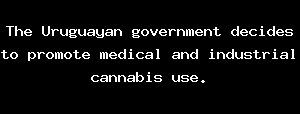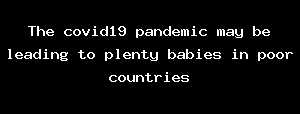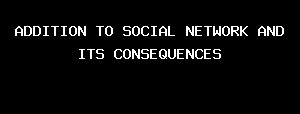Select a category
Advertisement

The Nordic country's lockdown sent the economy into a tailspin and triggered hundreds of thousands of layoffs.
"Together we have taken control of the virus, therefore we can open up society little by little," Erna Solberg told a news conference.
On Monday, her health minister said the epidemic was "under control" in Norway, pointing to the low rate of transmission.
Current restrictions, which are in place until April 13, include the closure of nurseries and schools, refusing entry to foreigners who do not live and work in Norway and forbidding people to go to their mountain cabins if they have one.
Kindergartens will reopen between April 20 and 27, schools from the first grade to the fourth grade will reopen from April 27, and Norwegians can go to their chalets from April 20.
At the same time, working from home must continue and Norwegians must get used to measures against contamination "for a long time", Solberg said.
In addition, major sports and cultural events such as festivals would be banned until June 15 and Norwegians living in Norway are still advised not to travel abroad unless it is absolutely necessary.
Foreigners without the right to live or work in the country - tourists, for instance - are still not allowed to enter the country. The only ones who can come are European citizens working in sectors considered crucial, such as agriculture, fisheries or the oil industry.
Some 5,863 people had tested positive for the coronavirus as of Tuesday, up from 5,755 reported on Monday, the Norwegian Institute of Public Health said. Some 69 people have died of the disease so far.
Norway's rate of unemployment rose to 15.4% on Tuesday, the Labour and Welfare Agency said, the highest level on record, up from 14.7% on March 31, as the economy ground to a halt.
Norway is the latest country to ease some of its restrictions.
Fellow Nordic nation Denmark, which followed a similarly tough line to Norway, announced late on Monday it would reopen day care centres and schools on April 15 as a first step to gradually relaxing its three-week lockdown.
Vivo Officially Confirms Origin OS Is Replacing Funtouch OS

Earlier this week, news broke out that vivo is gearing up to replace its Funtouch OS with an all-new overlay called Origin OS based on Android. The project has been dubbed a complete makeover of Funtouch OS and now we have official confirmation from vivo that Origin OS is indeed real thanks to several posts from the brand’s official WeChat account.
The launch of the new OS is expected to take place on November 19 when vivo is planning to hold its developer conference. There we’ll get to see what vivo has in store on its software front and we also might just see the upcoming vivo X60 which has been rumored to launch around November-December.

Investors have a clearer panorama now that cannabis products production, industrialization, and export licenses are being streamlined.
Regarding industrial use, Livestock, Agriculture and Fishing Ministry (“MGAPâ€) have publicly stated that “they are working to amend cannabis and hemp legal framework, in order to make this industry more flexible, as a productive alternative to boost the agricultural sector and the country’s economy â€.
In 2020, cannabis is being exported for industrial and medical uses to different countries (including highly demanding markets, such as Switzerland). It is estimated that by the end of this year exports will reach about US$200 million.
The Covid19 Pandemic May Be Leading To Plenty Babies In Poor Countries

WHEN KAMPALA went into covid-19 lockdown, singletons in the Ugandan capital were looking for “lockdown partnersâ€, says Allan Creed, who works in digital marketing. He and his friends couldn’t get to their local shops to buy contraceptives. Mr Creed has been relying on free condoms doled out by the United Nations Population Fund (UNFPA) via a local motorbike ride-hailing app called SafeBoda. But three of his friends now have unplanned pregnancies in the midst of their university degrees. “We were not moving, we were not working, nothing was happening, so you had a lot of time on your hands,†the 26-year-old explains.
Meanwhile in wealthy Singapore, where contraception is easy to come by, young people who were already reluctant to start a family before the pandemic are even more so during a global recession. The government is trying to coax people into reproducing with a one-off grant of S$3,000 ($2,200) for having a child in the next two years on top of pre-existing payments and savings schemes. For Keith, even that doesn’t make up for the cost of becoming a father.

Introduction
Social network is a term used to describe the interaction between groups or individuals in which they produce, share, and sometimes exchange ideas over the Internet and in virtual communities.
Social networking is the use of internet-based social media programs to make connections with friends, family, classmates, customers and clients.
Social networking can occur for social purposes, business purposes or both through sites such as Facebook, twitter, linked in, what Sapp, etc. Social networking is also a significant target area for marketers seeking to engage users.
Defining Social Networking Addiction
Addiction usually refers to compulsive behavior that leads to negative effects. In most addictions, people feel compelled to do certain activities so often that they become a harmful habit, which then interferes with other important activities such as work or school.
In that context, a social networking addiction could be considered someone with a compulsion to use social media to excess -- constantly checking Facebook status updates or "stalking" people's profiles on Facebook, for example, for hours on end.
The influence of social media on adolescents and teenagers is of particular importance, not only because this particular group of children is developmentally vulnerable but also because they are among the heaviest users of social networking. The impact of social networks on young people is significant. Children are growing up surrounded by mobile devices and interactive social networking sites such as Twitter, MySpace, and Facebook, which has made the social media a vital aspect of their life. Social network is transforming the manner in which young people interact with their parents, peers, as well as how they make use of technology.
The effects of social networking are twofold
On the positive side, social networks can act as valuable tools for professionals. They achieve this by assisting young professionals to market their skills and seek business opportunities. Social networking sites may also be used to network professionally. On the negative side, the Internet is laden with a number of risks associated with online communities.
Negative effects
Cybersex addiction
Too much surfing of porn sites often affects real-life relationship.
Cyber-relationship addiction
Excessive use of social networking sites to create relationship rather than spending time with family or friends may destroy real life relationship.
Cyber-stalking
Stalking is defined as the obsessive monitoring or attention towards the victim that may harass him or her. Cyber-stalking can be done in many different ways using social media. Sometimes, an ex-boyfriend or spouse may get angry at the breakup of a relation and use social media to pursue the victim. In another case, a relationship that was developed online gets sour and the stalker can use the personal information shared. Or, someone may also fall victim to a random cyber stalking attack.
Online grooming
One of the most distressing aspects of the social media is the growing evidence that paedophiles may use fake accounts on the social media to make friendships with young children and teenagers. They pretend to be of the same age to win children’s confidence. They can then gain vital personal information like their schools and the places where they hang out. They can then use that information to bully and make sexual contact with their victims or exposing them to explicit imagery or content.
Lack Of Interpersonal Skills:
Children spending too much time online may consider a virtual relation substitute for a real one. By spending more time online they often ignore the importance and the appropriate behavior related to face-to-face contact. Hence, the set of interpersonal skills that are necessary for the success in the real life may not develop properly.
Social Distrust
As mentioned that unknown online users may indulge in aggressive or offensive behavior. Kids may think if such aggression or offensive is committed in real life situation. This may result in social distrust towards the unknown others
Cyber Bullying
One of the often-cited dangers of social media is cyber bullying. It occurs when a person uses sites like Facebook to adopt a threatening behavior towards someone during a discussion or sends threatening messages.
The immediacy provided by social media is available to predators as well as friends. Kids especially are vulnerable to the practice of cyber-bullying in which the perpetrators, anonymously or even posing as people their victims trust, terrorize individuals in front of their peers. The devastation of these online attacks can leave deep mental scars. In several well-publicized cases, victims have even been driven to suicide. The anonymity afforded online can bring out dark impulses that might otherwise be suppressed. Cyber-bullying has spread widely among youth, with 42% reporting that they have been victims, according to a 2010 CBS News report. In reality, however, the consequences can be life altering to the extent that the victims could go as far as taking their lives or become psychologically distressed enough to require medical intervention.
Decreased productivity
While many businesses use social networking sites to find and communicate with clients, the sites can also prove a great distraction to employees who may show more interest in what their friends are posting than in their work tasks. Wired.com posted two studies which demonstrated damage to productivity caused by social networking: Nucleus Research reported that Facebook shaves 1.5% off office productivity while Morse claimed that British companies lost 2.2 billion a year to the social phenomenon. New technology products have become available that allow social networks to be blocked, but their effectiveness remains spotty.
Identity theft
One of the big problems with social media sites is that the children often do not fully read or understand the privacy settings of their accounts. They are unaware of the risks of disclosing unnecessary personal information. According to a recent survey, 20% of the youth think it to be perfectly safe to post their personal information and photos online. Such kids may easily become victim of the identity theft.
Explicit Or Violent Imagery
Spending a lot of time on the social media sites like Facebook can be dangerous, as often as a result of political events around the world, explicit and violent imagery get shown on the discussion threads. Often it is very difficult to moderate such content due to its viral nature. This may have a negative effect on the minds of the children, leading them to have a sadistic and defeatist view of the world.
Sharing too much privacy
Every one of us has it’s own set of beliefs and ideas that we try to live up to. In our daily life we have an interaction with limited circle of friends. However, sharing such ideas over websites like Facebook may result in dissemination of this information with people that we would not want normal life. This may even prove fatal for our relationship with those people.
Social networking sites encourage people to be more public about their personal lives. Because intimate details of our lives can be posted so easily, users are prone to bypass the filters they might normally employ when talking about their private lives. What's more, the things they post remain available indefinitely. While at one moment a photo of friends doing shots at a party may seem harmless, the image may appear less attractive in the context of an employer doing a background check. While most sites allow their users to control who sees the things they've posted, such limitations are often forgotten, can be difficult to control or don't work as well as advertised.
Emotional Implications:
Psychological experts warn that social media sites can have emotional implications for kids who are already suffering from low self-esteem or confidence. Such children may judge their success by the number of friends they have on the Facebook or if they are included in a specific group of people. This may lead to further diminishing of their confidence. “Facebook depression,” defined as emotional disturbance that develops when preteens and teens spend a great deal of time on social media sites, is now a very real malady. Recent studies have shown that comparisons are the main cause of Facebook depression; the study showed that down-comparison (comparing with inferiors) was just as likely to cause depression as up-comparison (comparing with people better than oneself). However, there are contradictory reports as well. Another study showed that Facebook makes us happier and increased social trust and engagement among users. Given that our brains are wired to connect, it seems logical to expect that social networks, by enabling sharing, could cause a self-reinforcing sense of psychological satisfaction. These studies show that the effect of social network on well-being hinges on how social networks are used — whether to connect or to compare.
Positive effects
1. Social networks help the businesses in a variety of ways. Traditional marketing mediums such as the radio, TV commercials and print ads are completely obsolete now and demand for thousands of dollars. However, with social media the businesses can connect with their targeted customers for free, the only cost is energy and time. Through Facebook, Twitter, LinkedIn or any other social site you can lower your marketing cost to a significant level.
2. The increasing popularity of social sites like Twitter, Facebook and LinkedIn, social networks has gained attention as the most viable communication choice for the bloggers, article writers and content creators.
3. These social networking sites have opened the opportunity for all the writers and bloggers to connect with their tech savvy clients to share your expertise and articles. Your audience will further share your articles, blog or expertise in their social circle, which further enhance your networks of the followers.
4. Social networks have removed all the communication and interaction barriers, and now one can communicate his/her perception and thoughts over a variety of topics. Students and experts are able to share and communicate with like-minded people and can ask for the input and opinion on a particular topic.
5. Another positive impact of social networking sites is to unite people on a huge platform for the achievement of some specific objective. This is very important to bring the positive change in society.
Physical symptoms of online addiction: Backache, Headaches, Weight gain or loss, Disturbance in sleep, Blurred or strained vision, etc.
Short-term effects: Unfinished tasks, Forgotten responsibilities, Weight gain.
Long-term effects:
Backache, Neck pain, Vision problems-from staring at the screen
Signs Of Social Media Addiction
1. Checking mobile phone every few minutes for any notification on Facebook, Twitter mentions and such.
2. Thinking the world is over when you have no Internet access or when Twitter, Facebook or other social media is down.
3. Literally announcing to everyone on social media what they are doing every day, every hour. Things like brushing teeth, having a lunch, found a penny, went shopping today and etc.
4. You tag your friends on pictures that do not involve them, in order to make sure they see the pictures on their Facebook timeline.
5. You start to #hash tag #about #everything #under #the sun.
6. You have made urgent requests on Facebook for your family and friends to send you ‘lives’ on Candy Crush. (As if your life depends on it.)
7. You believe life is more happening on social media than in reality.
8. You freak out if your pictures cannot be uploaded onto Instagram or Facebook.
9. You cannot live a day without social media; you need to travel with it, eat with it, sleep with it, or even using it while taking a dump.
10. You feel stressed for the entire day, if your ex-schoolmate, John does not respond to your friend request.
11. You love to stalk your friends via Facebook, Twitter and other social media accounts.
12. You feel proud when that cute picture of yours get a hundred likes on Facebook.
13 Every food you eat does not only go into your digestive system. It will also go into your Pinterest, Instagram and Facebook permanently.
14. Secretly spending some of work hours on social media.
15. Feeling upset when nobody comments on your updates in Facebook.
16. You spend at least 4 hours a day on social media, thereby isolating yourself away from social life.
17. You add strangers on LinkedIn, Facebook and Twitter, to make up the numbers.
18. Social media has become part of your daily ritual; like sleeping and eating.
19. You would wake up in the middle of the night to check your social media for updates.
20. You feel uncomfortable communicating with friends without using any social media device.
Here are five ways to cure your social media addiction
1. Admit you have a problem. Everyone else knows it anyway – you gave it away by liking all their statuses three nano-seconds after posting, then telling everyone what you had for breakfast (‘Rice Crispies again!!! Mental, LOL.’)
Write a short post explaining you’re addicted – No ‘Lulz’, just a statement of fact – and apologise for any newsfeed whoring you’re guilty of. That’s more than once a day, FYI.
2. Make a checklist of annoying Facebook activities and see how many you’re guilty of. There are social media accounts set up purely to mock annoying Facebookers – see Social Needier and Facebook Meltdown. Feel the shame. Absorb it.
3. Go cold turkey, a la Trainspotting. You may begin to hallucinate sarcastic Wonka memes and event invites. You needn’t delete your accounts – have a friend change your passwords, or use a tool like Facebook Limiter to block yourself for a given amount of time.
4. Each time you’re tempted to share your inspiring thought of the moment, write it down with pen and paper (assuming these non-digital items still exist) instead of firing it off into cyberspace like a vacuous bullet of would-be wisdom.
It will seem a lot less groundbreaking on paper, and you can save it up for something to talk about with real people in real life (eek). Also make a note of every time you feel a yearning to check your social media accounts. God willing, you’ll start to see a decrease the longer you stay in the real world.
5. Leave the house. Take a train somewhere without telling Twitter about the man picking his nose opposite, eat a sandwich without Instagramming it, see a friend without telling them and the rest of the world that you’re there, with them, at that very moment, having an AMAZING TIME, YEAH?
CONCLUSION
Adolescence is the time to spread wings and take the tentative first flight out into the world, and parents and caregivers must be part of the process. In the domain of social networking, this entails parents becoming educated about the advantages and disadvantages of social networking and themselves joining social network sites, not to hover, but to be aware of the activities of their teenage wards. It is essential that parents are aware of and monitor privacy settings and online profiles of their wards. Open discussions about social network protocols and etiquettes would go a long way in establishing global digital citizenship and healthy behavior.
REFERENCE;
1. Psychguides.com
2. Internetaddiction.com
3. Socialinteraction.com
Time To Kill
time To Break Down, And A Time To Build Up;"

time to break down, and a time to build up;"
The 6th commandment says, "Thou shalt not kill". Then how, can this Scripture say a time to kill? Thou shalt not kill, means thou shalt not commit premeditated murder. It does not mean that you are not to go to war to protect your family, or your country. A very good example of a time to kill is shown by God killing the firstborn in Egypt.
Exodus 12:12 "For I will pass through the land of Egypt this night, and will smite all the firstborn in the land of Egypt, both man and beast; and against all the gods of Egypt I will execute judgment: I [am] the LORD."
Another instance when it was a time to kill, is when David killed Goliath. You see, there is a time to kill, but it must be a time that God has chosen for us to kill, not a time when we kill for selfish reasons. It is nearly always the time to heal. Most of Jesus' ministry here on the earth involved healing. Everyone who had faith enough to receive his healing was healed by Him.
1 Peter 2:24 "Who his own self bare our sins in his own body on the tree, that we, being dead to sins, should live unto righteousness: by whose stripes ye were healed."
Our healing is spoken of as if it is already done in this Scripture. For us to be healed, we must apply this promise to our problem and believe. We must act upon the promise that Jesus has willed us.
John 14:12-14 "Verily, verily, I say unto you, He that believeth on me, the works that I do shall he do also; and greater [works] than these shall he do; because I go unto my Father." "And whatsoever ye shall ask in my name, that will I do, that the Father may be glorified in the Son." "If ye shall ask any thing in my name, I will do [it]."

 Fatou12
4 yrs
678
Fatou12
4 yrs
678
 Gen2sol
4 yrs
278
Gen2sol
4 yrs
278




 Ayomide16
4 yrs
557
Ayomide16
4 yrs
557
 Anointed1
4 yrs
2
Anointed1
4 yrs
2